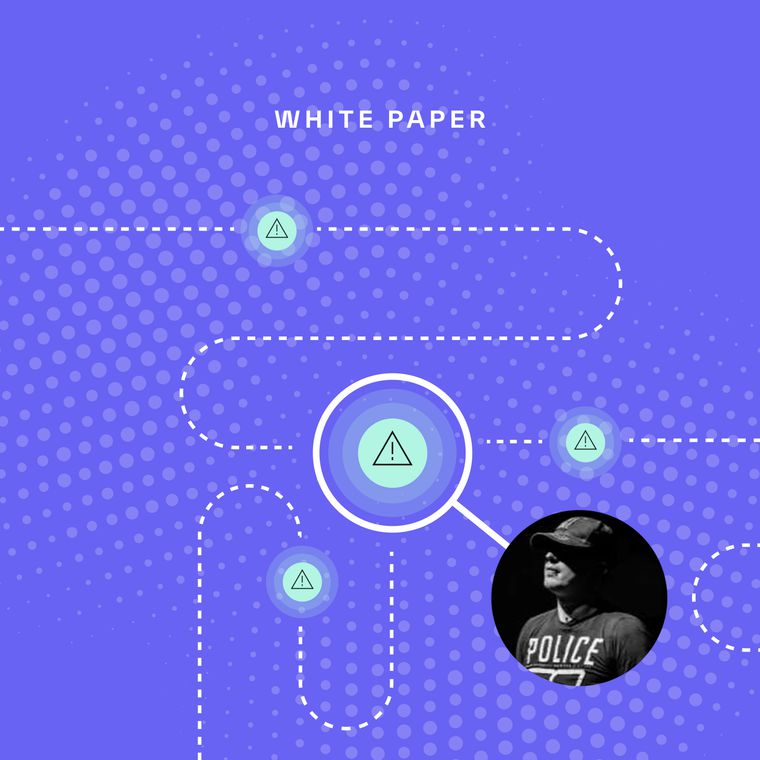Yes, GPTs fine-tuned on threat data can detect anomalies, draft incident reports, and help streamline security analyst workflows for faster response.
What Is a Generative Pre-Trained Transformer (GPT)? And Its Role in Cybersecurity
A generative pre-trained transformer (GPT) is an advanced AI language model that uses deep learning to generate human-like text. Developed by OpenAI, GPTs are trained on vast datasets and fine-tuned for various applications, including chatbots, content generation, and cybersecurity threat detection.
A generative pre-trained transformer (GPT) is an advanced AI language model that uses deep learning to generate human-like text.
Read on to learn more about what it is and how it affects cybersecurity today.
What Is a Generative Pre-trained Transformer (GPT)?
A generative pre-trained transformer, also known as a GPT, is a type of large language model developed by OpenAI. It leverages transformer architecture to process and generate human-like text.
Trained on vast amounts of data, GPT models can understand context and produce coherent responses, making them effective for tasks like drafting emails, summarizing content, and answering questions.
GPTs have set new benchmarks in natural language processing by combining scale, speed, and contextual understanding. Their ability to generate realistic text has broad applications, from chatbots to content creation tools.
How Generative Pre-Trained Transformers Work
GPTs are powerful because of how they’re built and trained. Their ability to understand context, adapt to new tasks, and generate coherent output stems from a combination of architectural design and training strategies.
Here's what enables their broad applicability, from detecting threats to generating human-like content:
Transformer-Based Architecture: Uses self-attention layers to evaluate relationships between words, enabling coherent and context-aware text generation.
Pre-Training and Fine-Tuning: Trained on massive datasets, then refined for specialized tasks like threat analysis or domain-specific communication.
Contextual Understanding: Long context windows help GPTs analyze full conversations, lengthy documents, and even extended security logs.
Few-Shot and Zero-Shot Learning: Capable of handling unfamiliar tasks with little or no example data—ideal for rapidly evolving cybersecurity environments.
The Role of Generative Pre-Trained Transformers in Cybersecurity
GPTs are reshaping the cybersecurity landscape, both as a tool for defenders and a weapon for attackers.
Their ability to understand and generate natural language enables automation of complex tasks like threat detection, while also introducing new risks by scaling the creation of convincing malicious content.
How GPTs Enhance Cybersecurity
GPTs trained on vast datasets and fine-tuned for specific use cases can process unstructured data, identify anomalies, and support analysts in real time.
Their benefits in security operations include:
Automated Threat Detection: GPT-powered systems can scan and interpret logs, alerts, and messages to identify suspicious activity faster and with greater precision.
Natural Language Processing (NLP) for Security Analysis: Advanced models help detect phishing attempts, deepfakes, and social engineering efforts by recognizing linguistic patterns and inconsistencies.
Incident Response Automation: GPTs assist in summarizing attack vectors, drafting security reports, and even generating response templates, accelerating analyst workflows.
Emerging Threats and Challenges
As defensive capabilities improve, malicious actors also adapt—using GPT-like models to automate and scale their attacks. This dual-use nature introduces new complexities for security teams:
AI-Generated Threats: Attackers use GPT models to craft highly convincing phishing emails, BEC schemes, and impersonation attempts at scale.
Hallucinations: GPTs can generate plausible but inaccurate information, risking poor decisions if outputs aren’t validated.
Lack of Explainability: The inner workings of GPT models are opaque, complicating auditing, compliance, and trust in AI-driven security processes.
Bias and Ethics: GPTs can reinforce bias present in training data, leading to flawed or unfair security outcomes.
Data Privacy and IP Risks: Use of sensitive or proprietary data in GPT prompts can expose organizations to confidentiality breaches and copyright challenges.
Generative Pre-Trained Transformers in Abnormal’s Approach
Abnormal integrates GPT-style models throughout its cloud email security platform:
Advanced Email Threat Detection: Identifies AI-generated phishing attacks through behavioral and linguistic analysis.
Automated Security Insights: Uses AI-generated text analysis to summarize attack trends and anomalies.
Adaptive Learning Models: Improve AI-based threat intelligence to detect emerging cyber threats.
GPT technology has reshaped natural language processing and cybersecurity alike. Staying informed on its capabilities and challenges is crucial for modern defense strategies.
Experience the power of GPT-enhanced security firsthand. Book a personalized demo to discover how Abnormal can help safeguard your organization.


